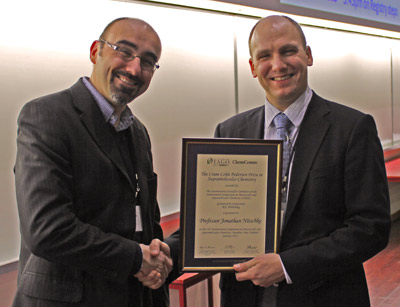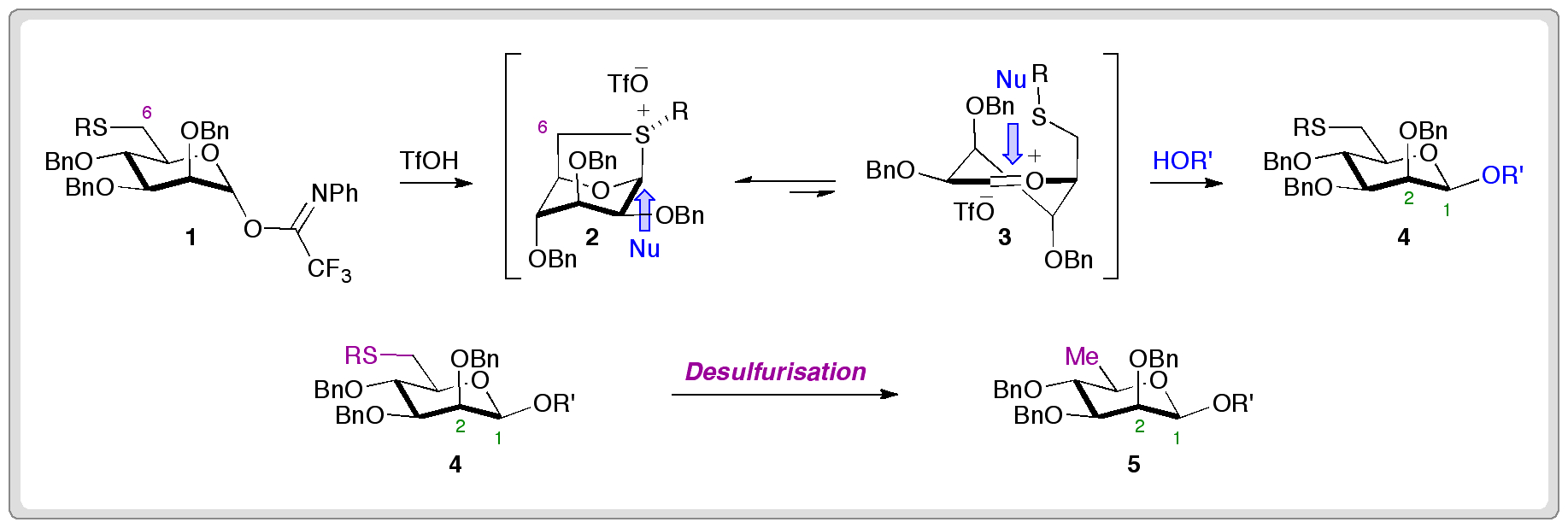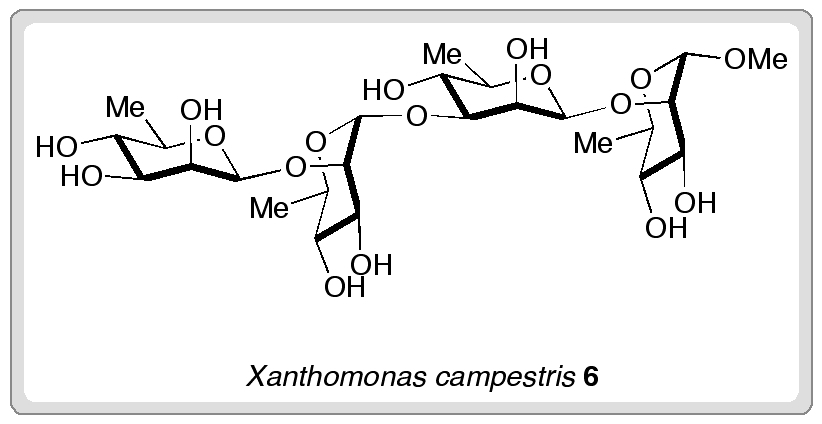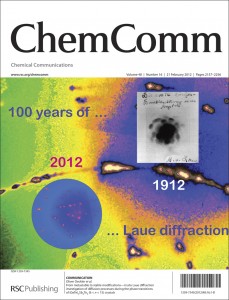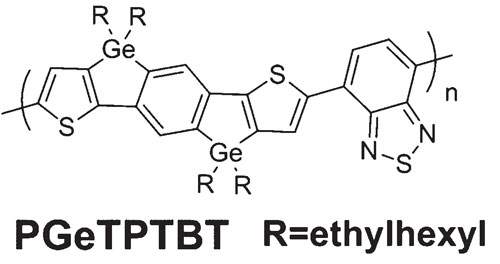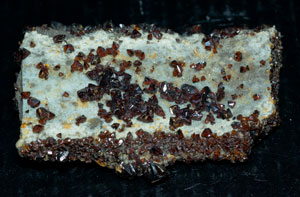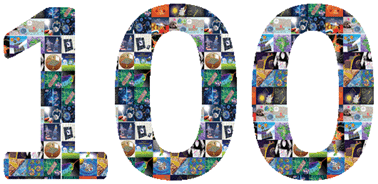The 2012 Cram Lehn Pedersen Prize has recently been awarded to Dr Jonathan Nitschke at the 2012 International Symposium on Macrocyclic and Supramolecular Chemistry (ISMSC-7) at the University of Otago in Dunedin, New Zealand.
The prize, sponsored by ChemComm and named in honour of the winners of the 1987 Nobel Prize in Chemistry, recognises significant, original and independent work in supramolecular chemistry by emerging investigators.
Presenting the award on behalf of ChemComm and the Organising Committee of the ISMSC, Professor Jonathan Steed of Durham University commented that “the forward-looking and sophisticated approach to the field adopted by its new stars such as Jonathan Nitschke highlights just how far the area has moved forward from its roots in classical macrocyclic chemistry. We can never forget just how visionary those early macrocyclic pioneers were in recognising the key interrelated importance of shape and function at a molecular level. This startling evolution was beautifully documented at the meeting by a fascinating retrospective by macrocyclic pioneer Prof. Neil Curtis that immediately preceded Prof. Nitschke’s elegant description of the self-assembled container chemistry and thermally switchable gels he is producing using the same principles some 55 years after Curtis’ initial discoveries.”
The conference continues until 2nd February. Later in the year, Jonathan Nitschke will be taking part in a Swiss lecture tour to celebrate his award: University of Zurich (29 May), Federal Polytechnic School of Lausanne (EPFL; 30 May), University of Geneva (31 May), Swiss Federal Institute of Technology Zurich (ETH; 1 June).
Nominations for the 2013 Cram Lehn Pedersen prize to be awarded at ISMSC-8 in Crystal City, Virginia, USA, will open later in the year. Stay tuned to the ChemComm blog for details.
Also of interest:
2011 Winner: Professor Amar Flood
ChemComm Supramolecular Chemistry web theme


